Kekkilä PrimeFLOW brings a unique air and water management solution for growers of young plants
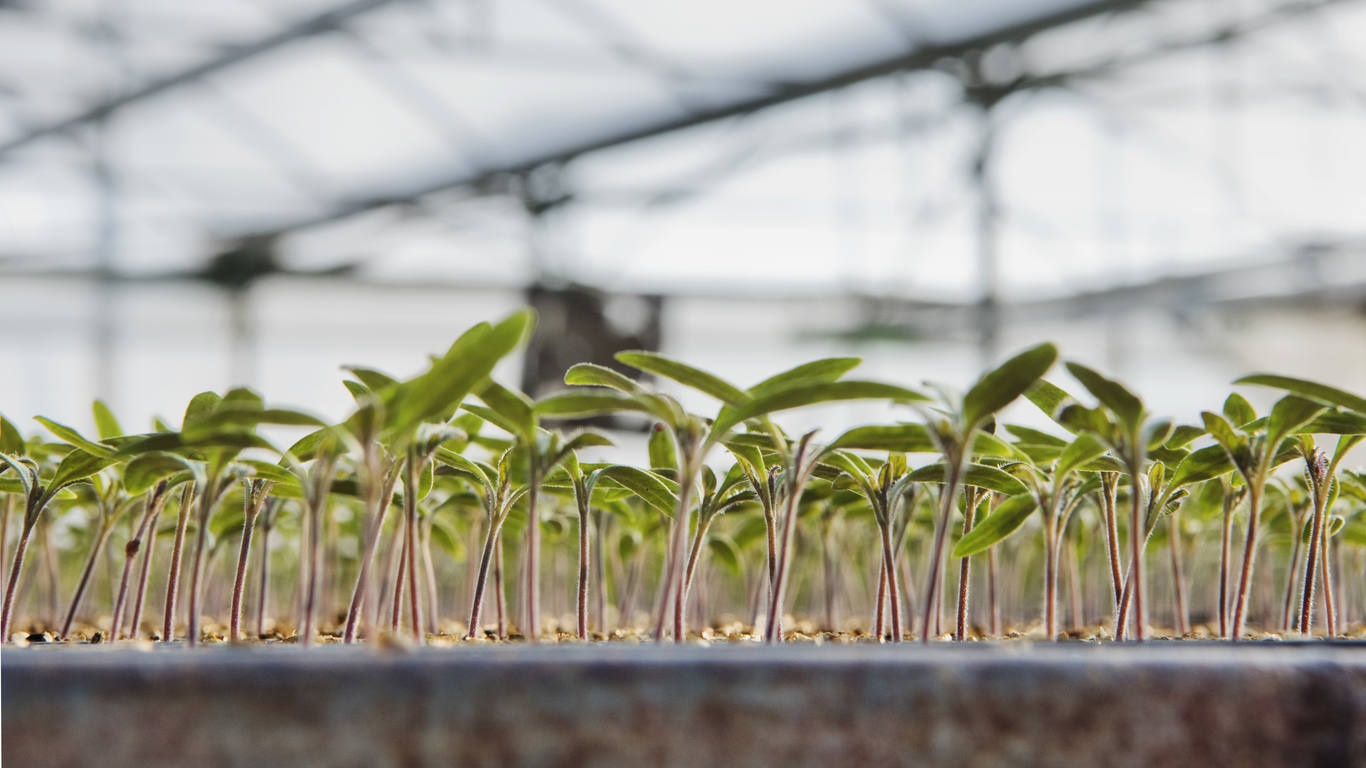
Today at IPM Essen Kekkilä Professional introduces a new product, namely Kekkilä PrimeFLOW, a unique substrate mixture containing renewable wood fibre. Kekkilä PrimeFLOW is produced with inventive solution in Kekkilä-BVB’s factories, which ensures uniform mixing so that the wood fibre is properly fluffed. This enables easy and smooth potting without oversized lumps of fibre or impurities. Kekkilä PrimeFLOW offers growers a product that has good air/water balance, for a competitive price compared to perlite. Kekkilä PrimeFLOW is in production and ready for orders.
Kekkilä PrimeFLOW is developed and tested to improve the growing conditions for bedding plant growers, young plant growers and tree nurseries. “We want to offer both sustainable and cost-efficient solutions for our customers. In continuous dialog with them we are constantly improving our offering for a better growing environment. Kekkilä PrimeFLOW answers some of the requirements of our customers such as products with improved drainage in finer fractions without perlite. With this new product we can bring solutions for tray mixes at a lower price and high-quality material for robotic transplanters.” says Guido Linders, Director, BU Professional growing.
Kekkilä PrimeFLOW solves several issues in small pot production
Nedeljko Basic, the product manager for Kekkilä PrimeFLOW highlights the unique benefits for the growers: “The clear benefits for the small pot grower are tangible. The wood fibre in the mixture ensures reduced shrinkage and increases solids in the mix, improving physical properties. The best usage of fertilizers and water thanks to Higher EAW (Easily available water) is one of the key features of Kekkilä PrimeFLOW. It brings along specific pore size distribution which is the most important factor for the plant’s growth. Furthermore, the optimum level of capillarity forces for all types of irrigation systems makes this product available for all small pot growers.”
Kekkilä PrimeFLOW is completing the Kekkilä FLOW family, which already includes three sustainable products that improve water management: Kekkilä SafeFLOW, Kekkilä EasyFLOW and Kekkilä SteadyFLOW.
Read more: https://www.kekkilaprofessional.com/products/ornamental-and-pot-plants/flow/
Read more about Kekkilä-BVB´s concrete sustainability cases here: kekkila-bvb.com/sustainability
Contact:
Guido Linders, Director BU Professional growing: guido.linders@kekkila-bvb.com tel. +31 (0)653273109
Nedeljko Basic, Product Manager: nedeljko.basic@kekkila-bvb.com, tel. +358 (0)406324837
Kekkilä Professional is a premier brand of high-quality growing solutions for global modern horticulture. Kekkilä Professional is a brand of Kekkilä-BVB, the European leader in horticulture. We provide products and services for professional greenhouse growers, consumers and landscapers to over 100 countries worldwide. We have strong product brands within the professional and consumer growing markets, trading under the names of BVB Substrates, Kekkilä Professional, Kekkilä Garden, Hasselfors Garden, Jardino and Florentus. Together with our customers we grow for a better future. Kekkilä-BVB is a part of Vapo Group.
www.kekkila-bvb.com
Biodiversity in soil
By definition, soil health means the continued capacity of soil to function as a living ecosystem – a viable community of organisms that sustains plants, animals and humans. From a gardener’s point of view this would mean a substrate that sustains healthy and flourishing plants with minimal input like fertilization, raking and weeding.
Soil is a natural habitat for numerous micro-organisms – most of which live in air and water pores among the solid mineral and organic particles, and most of which are beneficial for the soil and plant health, although numerous forms of pathogenic soil micro-organisms also exist. Soil micro-organisms include different species of bacteria, fungi, protozoa and nematodes, of which the beneficial ones stabilize the soil and they help the water and nutrient cycling, for example by decomposing organic matter. Along with bigger organisms – worms, arthropods, birds and mammals they form the soil food web. A healthy soil food web maintains itself and recycles nutrients and materials effectively.
Bacteria are an essential part of the soil food web, as they function as decomposers as well as food providers for other organisms. A teaspoonful of soil contains a billion bacteria, most of which are beneficial. Bacteria feed on organic matter compounds by decomposing them with extracellular enzymes. This releases phosphorus and other nutrients from organic matter into a plant-available form. While doing this, they create biofilms on the surfaces of the soil particles – this slimy film is excellent in holding moisture and increases the water holding capacity of soil.
Fungi (over 100 000 diverse species) accompany bacteria in solubilizing minerals for plants to use. They consist of microscopic threads called hyphae, that form a network (mycelia) to transport water, nutrients and other resources. Fungi are especially good at decomposing woody material high in lignin. They glue soil particles together into macroaggregates and decrease the risk for soil erosion. Mychorrizal fungi live in symbiosis with certain plant species: In a symbiosis, the fungus receives carbon compounds from the plant, while giving the plant nutrients and water.
Protozoa are single-celled organisms that live in the waterfilm and pores between soil particles, which makes them vulnerable to soil compaction. Protozoa feed on bacteria and fungi, thereby releasing back into the soil the nutrients that had been stored inside them from decomposing. At the same time while feeding, the protozoa reduce the population of pathogenic bacteria and fungi.
Nematodes eat organic matter, bacteria and fungi and take part in releasing nutrients into plant soluble form. They are also food for many predator species, and thus an essential part of the food chain. Where there are nematodes, there is a continuous buffet for insects, worms, and lastly, birds and mammals.
Soil micro-organisms thrive in a natural ecosystem in which energy and nutrients are recycled endlessly without any additive fertilizing. The best way to create a successful soil food web in a garden or a green area is to try and imitate the circumstances of natural habitats. The diversity of micro-organisms in a soil can naturally be conserved and/or improved by planting diverse, various plant species rather than monoculture: biodiversity above ground helps biodiversity below ground and vice versa. Hanna Williams suggests that it might be a good idea to start with a diverse set of plants and rely on natural selection, as this guarantees the best opportunities for specialist species to survive as well. The diversity of micro-organisms in a soil could also be manipulated artificially by adding microbial-based biostimulants. To do this successfully, the present microbial composition and its activity in a soil sample can be visualized by laboratory techniques and the community can be supplemented with artificial cocktails of one or more micro-organisms (biostimulants). Roxanne emphasizes this artificial manipulation of soil ecology is complex, its success depends on many factors, such as the physical and chemical conditions of the soil, the community of micro-organisms already present, and the plant species that will grow on the soil.
In order to ensure a viable soil community, the soil should be disturbed as little as possible after planting. Any digging or deep tillage will disrupt life cycles and tear organisms apart – although the more diverse the system is from the beginning, the more resilient it will be at any future disturbance. A high-quality substrate that has a good ratio of sand and organic matter decreases the need for soil improvers, and so does favoring microbe-filled compost as raw material. Hanna has great news for all lazy gardeners: leaving grass clippings and fallen leaves on the ground protects the soil from drought and erosion, and provides food for microbes and animals.
For more information please watch the two very topical presentations on biodiversity in soil:
- Biodiversity within the soil / substrate by Hanna Williams, Agronomist with focus on soil health, Splendor Plant, and
- Microbial ecology of soil and growing media by Roxanne van Rooijen, Researcher, Kekkilä-BVB.
Hanna Williams works for Splendor Plant – a Swedish nursery that produces trees, bushes and perennials for wholesale. Focusing on soil health is an essential part of Splendor Plant’s operations, since the plants are produced in open-field cultivation. In order to maintain the production fields and understand the crop plants’ needs, Hanna Williams has taken a deep-dive into the life below the surface.
Roxanne van Rooijen works as a Researcher for Kekkilä-BVB in the Innovation department. Kekkilä-BVB’s Innovation is interested in manipulating the microbial ecology and soil health of a substrate to enhance the substrate’s quality and therefor its value for horticulture.
Hanna Rummukainen works as the Product Quality Specialist in Kekkilä-BVB, Landscaping & Recycling. Through our landscaping solutions we can contribute to green and biodiverse urban areas.
BVB Substrates introduces sustainable new innovation for acid loving crops

The new product in BVB Substrates’ portfolio, BVB Quick Rooting Acid Loving Substrate, is a mixture suitable for the cultivation of acid-loving crops. BVB Accretio is used as one of the raw materials. Its unique physical and chemical properties help crops to develop strong root systems more quickly. BVB Accretio is a new raw material made of sphagnum moss. It offers many advantages for growing acid-loving crops, such as quick rooting, which is important for enclosing the roots well while providing sufficient drainage.This ensures the availability of air to the rootzone.
“Recent research shows that adding BVB Accretio to substrates quickens the rooting of crops thanks to the increased porosity of the mixture. BVB Accretio ensures that the plant roots can access water evenly at any time due to the improved water holding capacity it gives the substrate.” says expert product manager Bram van Brommel.
The chemical characteristics of BVB Accretio are particularly suitable for acid-loving crops e.g. due to a low pH level. It provides a good pH-buffer which steadies the pH level throughout the growing stages, making the mixture reliable and stable.
BVB Accretio – a sustainable raw material
The origin of BVB Accretio is in Finland where there is approximately 300.000 hectares of land area suitable for the collection of this moss. Sphagnum moss is a renewable material, which means that it grows back after harvesting and is ready to be harvested again in 20-30 years. Research shows that the harvest doesn’t have a negative impact on the environment.
In addition to the fact that the extraction of the raw material has minimal impact on the ecosystem, it also has a relatively low weight. This means that the transport of BVB Accretio has a smaller environmental footprint.
“For Kekkilä-BVB, sustainability is about a change in how we as a company do business, taking into account the whole value chain. We are focusing on how we can help our customers in the most sustainable way. Using sustainable raw materials such as Accretio in our products helps our customers in their way of doing sustainable business.” says Guido Linders, Director BU professional growing.
Read more: https://www.bvb-substrates.nl/en/bvb-accretio-sustainable-raw-material-for-substrates/
Contact:
Guido Linders, Director BU Professional growing, guido.linders@kekkila-bvb.com,
tel. +31 (0)6 53 273 109
Bram van Bommel, Product Manager for Tree Nurseries, bram.van.brommel@kekkila-bvb.com,
tel. +31 (0)6 55 737 557
BVB Substrates was founded in the Netherlands over 100 years ago. High quality, tailormade growing media under the BVB substrates brand are sold directly to professional growers worldwide. BVB Substrates is a brand of Kekkilä-BVB, the European leader in horticulture. We provide products and services for professional greenhouse growers, consumers and landscapers to over 100 countries worldwide. We have strong product brands within the professional and consumer growing markets, trading under the names of BVB Substrates, Kekkilä Professional, Kekkilä Garden, Hasselfors Garden, Jardino and Florentus. Together with our customers we grow for a better future. Kekkilä-BVB is a part of Vapo Group.
www.kekkila-bvb.com
World Wetlands Day: An introduction to peatland
“If your feet are wet but you can’t swim, then its peatland”
For this year’s World Wetlands Day, we decided to dedicate our blog to a very particular kind of wetland, peatland. We invited the President, one of the two Vice-Presidents, and Acting Secretary General of the International Peatland Society (IPS); Marko Pomerants, Jack Rieley and Susann Warnecke respectfully, to give us an introduction to peatland.
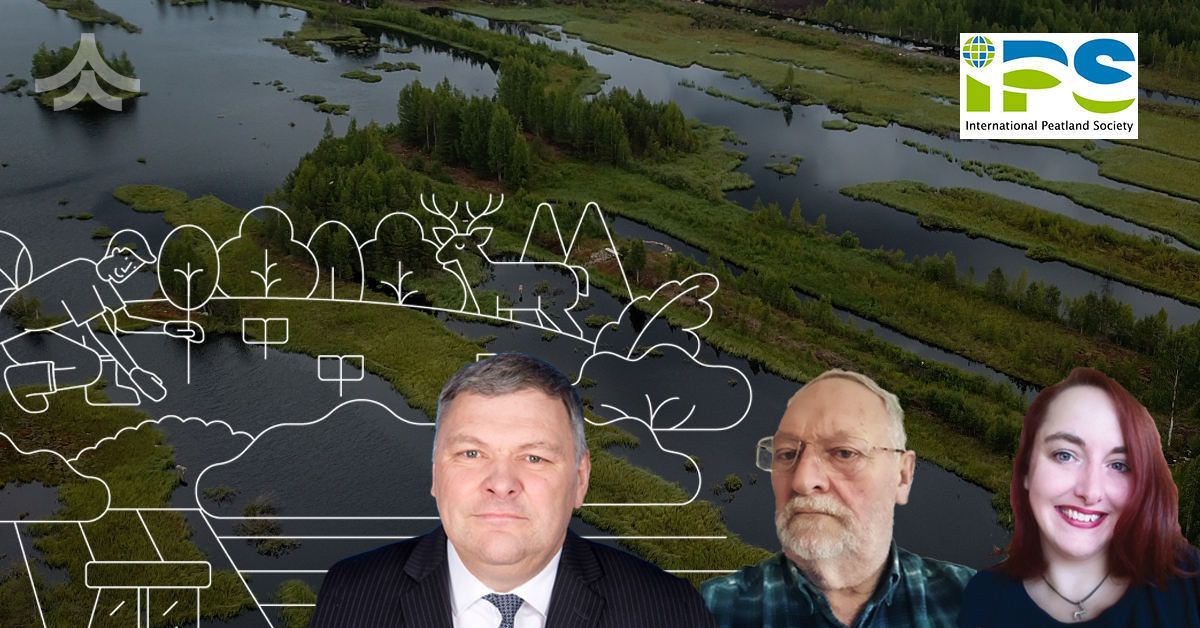
What is the difference between wetlands and peatlands?
Peatlands are wetlands but not all wetlands are peatlands. A wetland is an ecosystem which is either permanently or temporarily flooded or full of water. This includes everything from bogs, swamps, coastal shallows and more, but there is a distinction between freshwater wetlands and saltwater wetlands.
How do you define peatland?
Peatland is a type of freshwater wetland with an accumulation of partly decomposed plant matter. Specifically, the water, acidity levels, lack of oxygen and the incomplete decomposition of organic materials leads to accumulation of organic matter over time which is later referred to as peat once it reaches an approximate 10-20cm level of thickness. It is important to note that this is a broad description as there is no fixed definition as peatlands and peat can develop in every continent in the world and from different plants in different locations. Colloquially though, you can say if your feet are wet, but you can’t swim then you’re in a peatland.
Where does peatland form?
In short, on every continent, 50% of wetlands are peatlands. 12% of global peatlands are tropical peat swamp forests, commonly known as rainforests in the tropics. The remaining 88% of peatlands are non-tropical with the majority situated in the Northern hemisphere as we do not have as much land mass in the Southern hemisphere. Where they form, even regionally, can vary. In Scotland you have blanket bogs which are formed way up on mountain ridges, whereas in Finland you see them forming in shallow areas, in former lakes as well as land that is still being lifted after the last ice age, while in Siberia they are often affected by permafrost. Due to the wide range of causes, the ages of peatlands throughout the world can vary from a few hundred to tens of thousands of years.
What are the variations of peatlands and what does this mean for the peat?
In Northern Europe, the bog moss Sphagnum is the main peat forming plant, but depending where you are on earth peat can be formed by completely different plants, for example in the tropics in Southeast Asia the main peat formers are rainforest trees that can be more than 30 meters tall. All over the world, peatlands are natural ecosystems populated by a myriad of different plants ranging from primitive low-growing mosses to massive trees. This leads to peat with varying biological, chemical and physical characteristics of incredible complexity. In the tropics peat has a very high wood content, including branches and trunks making its qualities different from Sphagnum peat and difficult to extract to use for energy or growing media.
Talking of growing media, which peat has the best characteristics for growing?
When it comes to growing media used by gardeners or commercial growers of food and ornamental plants there is a difference between fen peat which comes from lowland peatland, that received nutrient-rich ground water in addition to rain, and raised bog peat, which forms in waterlogged, acidic, nutrient-poor conditions at the end of mire succession from open water wetland when the area is fed only by rainwater. Only special mire plants can survive in acid peat bogs. Fen peats contain an abundance of sedges, grasses, and other emergent plants such as bulrushes collectively referred to as reeds together with a large variety of other flowering plants. Fen peat can provide a nutrient-rich ingredient that can be used for some types of growing media. Most of the peat used in horticulture growing media is harvested in the northern hemisphere (especially Europe and North America) from raised bogs, they are fed by rainwater only and that have an abundance of Sphagnum mosses. Peat is an important ingredient for growing media on account of its availability, quality, reliability, and lack of disease or pest vectors that provides a more neutral or “clean” substrate which is high in demand as it can be used to support the growth of almost all plants.
Why are peatlands important?
The importance of peatland can be divided into three sections: Environmental, social, and economical.
Environmentally, peatland is obviously the home to a large variety of flora and fauna throughout the world. Peatlands although they cover only 3% of the global land surface are one of the largest stores of carbon extracted as carbon dioxide from the atmosphere by the peat-forming plants. It is said that peatlands store more carbon in their peat than all the world forest above ground biomass. However, because peat is around 90 per cent water peatland plays a key role in the water cycle by detaining, storing, and releasing rainwater it makes it also important for human communities.
Socially, peatlands have a long history with humans. There are folktales that they are home to fairies and trolls, they are sites for artefacts as people hid their possessions, and they were used as shelter during difficult times such as war and famine. They were sources of food and material for shelter. These days they offer people a place to walk, to be outside, to collect berries and mushrooms, and enjoy the fresh air.
Economically speaking, peat has been harvested for not just hundreds but thousands of years. The peat was used for insulation of houses, until recently it was burnt for heating, and of course animal bedding. The peak of harvesting came in the late 18th and early 19th century due to the reliance on animals and the need for bedding. During the World War I, there were so many horses they had to dig peat bogs almost out of existence, for instance in the Netherlands. In the modern-day world very little is extracted. There are 4 million km2 of peatlands in the world and we harvest just 4000km2, of which only half of that is used for horticultural purposes. Burning peat for energy has almost completely ceased due to high emission right costs.
Today the activity happening to peatlands is restoration and rewetting. This is happening across the globe on near pristine as well as former industrial sites, afforested sites, in tropical peat swamps and even urban areas.
What are the biggest challenge peatlands face today?
In developed countries peatland drainage and degradation has taken place over centuries mainly for agriculture – arable crops and livestock bedding and grazing, but also for domestic purposes, burning and water supply. The priority is to rehabilitate degraded peatlands back to their original peat forming, carbon storing condition. This is a major challenge that has already started in many countries, but it involves dam construction, rewetting, re-vegetating (with Sphagnum) and is costly.
In undeveloped and developing countries where the importance of peatlands as carbon stores is just being realised and, hitherto, unknown peatlands are being discovered the challenge is to persuade governments not to embark on wholesale development for agriculture or plantations of traded commodity. This will only create similar problems found in the developed world of peat oxidation (decomposition), subsidence, flooding and eventual loss of economy and livelihoods.
If peatlands and peat must be used this must be done in a responsible manner with after use plans in place and parallel restoration of previously degraded peatland as offset.
Endnote
There is an odd myth that extraction of peat is the biggest threat to peatlands but that isn’t true. It is mainly agriculture, forestry and climate change which are destroying the ecosystems of many peatlands. Globally, greenhouse gas emissions from drained peatlands accounts for around 5% of global emissions. Statements usually say this comes from agriculture, forestry and peat extraction, implying that these contribute equally. In fact, agriculture on peatland soils contributes 75% (of the 5%), Forestry about 25% (of the 5%) while peat extraction contributes less than 0.1% (of the 5%). This puts the matter in perspective.
About IPS
The International Peatland Society is the only international organisation that is dedicated to every aspect of peatlands, including peat industry. Its more than 1600 members are mostly scientists and other experts, but it also has around 300 corporate company members. IPS aims to be the leading international organisation promoting the responsible management and wise use of peatlands and peat with the mission to serve all those involved in peatlands and peat through the promotion, gathering, exchange and communication of knowledge and experience, by means of events and projects which address key issues, including climate change, biodiversity, the need for responsible use and restoration. Learn more here.
About Marko Pomerants
Marko Pomerants is a qualified Geological Engineer who has worked in multiple positions within the Estonian government including Minister for Environment a role in which he signed the Paris climate agreement on behalf of Estonia. He is the President of IPS.
About Jack Rieley
Professor Jack Rieley is a semi-retired academic who specialises in botany, peatland ecology and nature management. He has been a member of IPS since early in its formation and is one of two Vice-Presidents of the organisation.
About Susann Warnecke
With a background in Business Administration Susann Warnecke has been with IPS for over two decades and is currently their Acting General Secretary.
Technical Manager
Hasselfors Garden AB är en del av Kekkilä-BVB, Europas ledande aktör inom odlingssubstrat. I dag exporterar vi växtsubstrat för professionella växthusodlare till över 100 länder. Till konsument och grönytebranschen erbjuder vi rådgivning, växtsubstrat och jord i Norden och Centraleuropa. Som ett led i att vara ett självklart val för våra kunder har Kekkilä BVB satt hållbarhet främst i hela konsumtionskedjan. Företagets slogan Care for life visar hur våra odlingssubstrat möjliggör matproduktion, gröna städer och hållbar odling. Kekkilä-BVB är marknadsledare i Norden med kända varumärken som Kekkilä Garden och Hasselfors Garden. Kekkilä-BVB är en del av Neova Group, läs mer om Kekkilä-BVB på https://www.kekkila-bvb.com/. För Hasselfors Gardens räkning så började allt år 1603 i Hasselfors, Närke. Företaget har en lång och gedigen historia som gör oss till ett av de tio äldsta företagen i Sverige. Besök oss och läs mer på https://www.hasselforsgarden.se/.
Arbetsbeskrivning:
Vi söker nu en Technical Manager till Hasselfors Garden. I rollen som Technical manager ansvarar du för att leda underhållsverksamheten på flera ställen i Sverige samt ansvarar för underhållspersonal och externa servicepartners. Rollen ansvarar även för arbete med långsiktig och kortsiktig investeringsplanering och implementering samt tillhandahåller teknisk support där säkerhet alltid ska ses som en hög prioritet. I det dagliga arbetet kommer du leda och samordna den tekniska utvecklingen inom organisationen samt underhållsverksamheten. Rollen innefattar även projektledning, budgetering samt kapitalförvaltning. Du kommer arbeta nära många andra delar av organisationen som exempelvis Ekonomi, IT och försäljning.
Anställningsformen är heltid 100 % tillsvidareanställning. Du rapporterar till Head of Engineering som är stationerad i Finland och dina kollegor finns i Sverige, Finland samt Estland. Vi har 3 produktionsplatser runt om i landet varav huvudkontoret är placerat i Örebro. Den geografiska spridningen av produktionsplatser innebär att våra kollegor är bosatta runt om hela Sverige men föredragen bostadsort är i Örebro med omnejd. I denna roll är det möjligt att arbeta enligt våra hybridarbetsmodellprinciper (delvis på distans). Denna tjänst kräver resor och i tjänsten finns möjlighet till tjänstebil.
Krav för tjänsten:
- Djup förståelse för produktionsprocesser, teknik samt ingenjörskonst.
- Erfarenhet av underhållsledning.
- Kandidatexamen inom teknik, produktion, underhåll eller motsvarande.
- Flytande i svenska och engelska.
- God förståelse för IT-system.
- Erfarenhet av förändringsarbete.
Vi lägger stor vikt vid dina personliga egenskaper och ser gärna att du har erfarenhet av samverkan samt har enkelt för att skapa kontakter med andra människor och företag. I denna roll ställs krav på att själv ta ansvar för att följa upp och utveckla pågående projekt och vi tror därför att du har erfarenhet av projektledning och arbetar på ett lösningsorienterat sätt.
Eftersom att vi ingår i en internationell företagsgrupp där vårt företagsspråk är engelska är det ett krav att du kan kommunicera flytande på engelska i tal och skrift. Språkkunskaper i nederländska/svenska/finska/estniska/tyska anses vara en fördel men inget krav.
Urval sker löpande så ansök gärna redan idag eller senast 30 november. Har du frågor som inte besvaras av annonsen är du välkommen att kontakta rekryterande chef Juha Järvinen, juha.jarvinen@kekkila-bvb.com. Våra värderingar är: Fokus på kundframgång, Lyckas tillsammans, Mod att förnya och Förtroende genom respekt.
Technical Manager
Hasselfors Garden AB är en del av Kekkilä-BVB, Europas ledande aktör inom odlingssubstrat. I dag exporterar vi växtsubstrat för professionella växthusodlare till över 100 länder. Till konsument och grönytebranschen erbjuder vi rådgivning, växtsubstrat och jord i Norden och Centraleuropa. Som ett led i att vara ett självklart val för våra kunder har Kekkilä BVB satt hållbarhet främst i hela konsumtionskedjan. Företagets slogan Care for life visar hur våra odlingssubstrat möjliggör matproduktion, gröna städer och hållbar odling. Kekkilä-BVB är marknadsledare i Norden med kända varumärken som Kekkilä Garden och Hasselfors Garden. Kekkilä-BVB är en del av Neova Group, läs mer om Kekkilä-BVB på https://www.kekkila-bvb.com/. För Hasselfors Gardens räkning så började allt år 1603 i Hasselfors, Närke. Företaget har en lång och gedigen historia som gör oss till ett av de tio äldsta företagen i Sverige. Besök oss och läs mer på https://www.hasselforsgarden.se/.
Arbetsbeskrivning:
Vi söker nu en Technical Manager till Hasselfors Garden. I rollen som Technical manager ansvarar du för att leda underhållsverksamheten på flera ställen i Sverige samt ansvarar för underhållspersonal och externa servicepartners. Rollen ansvarar även för arbete med långsiktig och kortsiktig investeringsplanering och implementering samt tillhandahåller teknisk support där säkerhet alltid ska ses som en hög prioritet. I det dagliga arbetet kommer du leda och samordna den tekniska utvecklingen inom organisationen samt underhållsverksamheten. Rollen innefattar även projektledning, budgetering samt kapitalförvaltning. Du kommer arbeta nära många andra delar av organisationen som exempelvis Ekonomi, IT och försäljning.
Anställningsformen är heltid 100 % tillsvidareanställning. Du rapporterar till Head of Engineering som är stationerad i Finland och dina kollegor finns i Sverige, Finland samt Estland. Vi har 3 produktionsplatser runt om i landet varav huvudkontoret är placerat i Örebro. Den geografiska spridningen av produktionsplatser innebär att våra kollegor är bosatta runt om hela Sverige men föredragen bostadsort är i Örebro med omnejd. I denna roll är det möjligt att arbeta enligt våra hybridarbetsmodellprinciper (delvis på distans). Denna tjänst kräver resor och i tjänsten finns möjlighet till tjänstebil.
Krav för tjänsten:
- Djup förståelse för produktionsprocesser, teknik samt ingenjörskonst.
- Erfarenhet av underhållsledning.
- Kandidatexamen inom teknik, produktion, underhåll eller motsvarande.
- Flytande i svenska och engelska.
- God förståelse för IT-system.
- Erfarenhet av förändringsarbete.
Vi lägger stor vikt vid dina personliga egenskaper och ser gärna att du har erfarenhet av samverkan samt har enkelt för att skapa kontakter med andra människor och företag. I denna roll ställs krav på att själv ta ansvar för att följa upp och utveckla pågående projekt och vi tror därför att du har erfarenhet av projektledning och arbetar på ett lösningsorienterat sätt.
Eftersom att vi ingår i en internationell företagsgrupp där vårt företagsspråk är engelska är det ett krav att du kan kommunicera flytande på engelska i tal och skrift. Språkkunskaper i nederländska/svenska/finska/estniska/tyska anses vara en fördel men inget krav.
Urval sker löpande så ansök gärna redan idag eller senast 30 november. Har du frågor som inte besvaras av annonsen är du välkommen att kontakta rekryterande chef Juha Järvinen, juha.jarvinen@kekkila-bvb.com. Våra värderingar är: Fokus på kundframgång, Lyckas tillsammans, Mod att förnya och Förtroende genom respekt.
”Cities will be the driving force for sustainable innovations”
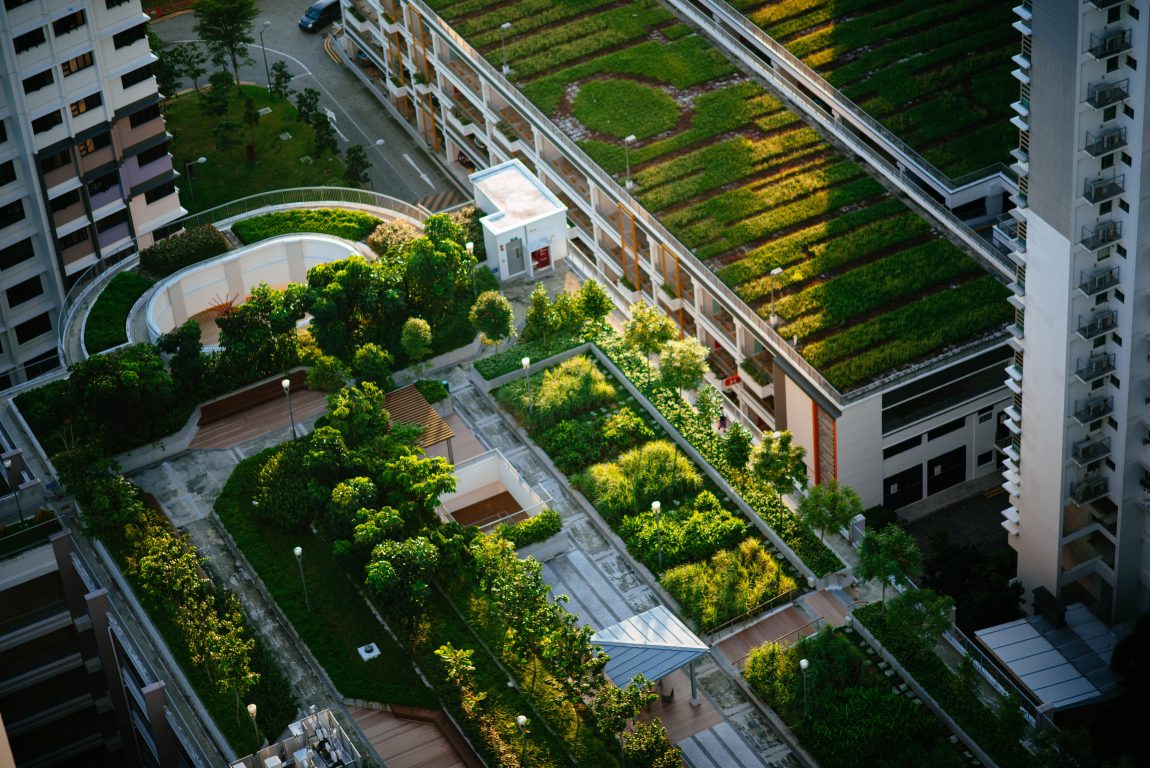
Rapid urbanization, an increasing global population and the fact that 2/3 of the population within 7 years from now will be living in areas where there is a lack of water affects us all. These facts are why we are investing in finding new raw materials and products to cultivation on substrates. This is also why Marck Hagen, our Innovation Director, chose to work at Kekkilä-BVB.
-With a growing global population, we need to produce more food with high quality. Finding new sustainable raw materials in making new substrates and products for cultivation on substrates is one way to invest in the future, Marck says.
Cities will become the driving force behind sustainable solutions and innovations that will help us save our planet. As one of the largest growing media companies in Europe, Kekkilä-BVB can be a forerunner in the sector showing how plants can be grown using less resources.
-Recent research shows that adding sphagnum moss to substrates is beneficial and sustainable in more than one way, Marck says.
Facing expanding urbanization and a growing population, the need for food is increasing. To be able to grow food as close to its consumption as possible, we need to find new sustainable raw materials, products and smart services which take water usage into account.
-Sustainable innovations are essential to provide citizens with healthy food and a good living environment, Marck says
Sphagnum moss – rapid regrowth after harvesting
Sphagnum moss has been used for different purposes for centuries. Sphagnum moss grows on the top of peat bogs and has not started the process of decomposition like peat. The main reason to use sphagnum moss as a raw material for substrates is that it is a living material. As a living material it regrows back relatively quickly on the peat bog after removal.
-Research shows that Sphagnum moss has started to grow again just after a year of being collected. It grows, approximately 10 mm per year. The collecting cycle is estimated to be 20-30 years, Marck says.
During the second year after collection, cotton grasses have often taken over the sites, and while cotton grasses continue to dominate in the third year, white mosses have already covered up to 50% of the area. In different peatland areas, the order and pace of regrowth may vary greatly. The Natural Resources Institute in Finland is currently researching the regrowth of moss.
Fast rooting speed and even water distribution
Recent research shows that adding sphagnum moss to substrates is beneficial and sustainable in more than one way. Mixing sphagnum moss in substrates allows for more porosity and therefore more available water for plants. Porosity ensures better drainage and there is always enough air available for the growth of roots. This means faster rooting and a shorter growing time. The addition of sphagnum moss to a mixture ensures a quick even water and nutrient distribution. Sphagnum moss has a large water holding capacity which means that less water is required for crops that grow in mixtures with this raw material added to it, as more water is held in the substrate.
– Sphagnum moss is easily adjustable with other raw materials, Marck says.
Kekkilä-BVB R&D center in De Lier
Kekkilä-BVB has a R&D center in De Lier in the Netherlands doing analyzes of the raw material and development of new products. Quality requirements are tested both internally and externally. Our laboratory is equipped with the most modern facilities and techniques. We test our new products extensively before we introduce them onto the market. Financial aspects are also taken into consideration, both from the producer side and from the view of the customer. Pilot-testing with customers and the afterlife of the product is also important. Every product must meet high requirements.
-In this way you are assured of the best quality throughout, Marck says.
More information about sphagnum moss (as raw material named BVB Accretio).
BVB Substrates and BVB Accretio
Link to article: Sphagnum moss and it´s sustainable ecosystem.
Any questions? Please contact Marck Hagen.
Author: Louise Harvig Olsmar & Kari Silokangas
Transforming the global food systems
Highlights from F&A Next, the yearly event where investors meet food and agri startups.
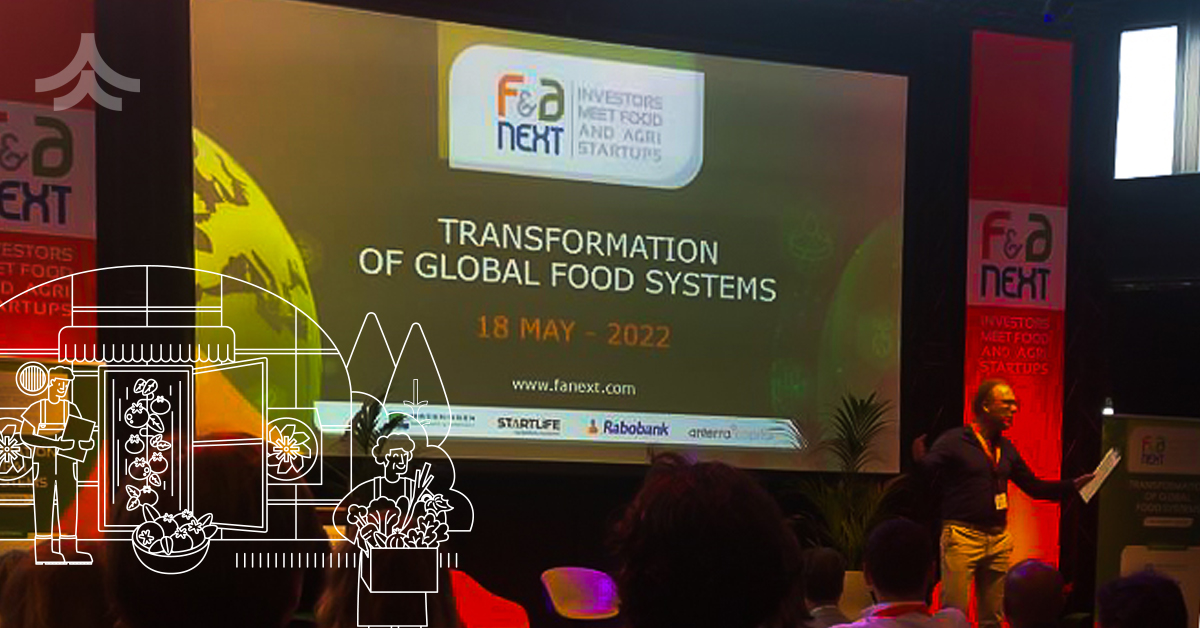
It was truly refreshing to meet face to face with different colleagues from the food sector and look to the future together. As sharing is caring, I thought I would share with you some of my key takeaways from the event.
Program started with a campus tour, where an interesting soil assessment solution Soil Navigator was introduced to us. It supports decisions for assessing and optimizing soil functions related to topics like carbon sequestration and biodiversity. A very important tool indeed!
We also had a chance to learn about data-based growing and how WUR researches and develops plant-based food. Key points to keep in mind when developing plant-based food with high protein value is that is has to be local, functional and affordable. Once these basic requirements are met, taste and texture will ultimately determine which options succeed and which fail.
Another interesting visit was to the One Planet Research Center, where they work with inspiring innovations, such as a toilet seat that tells you about your lifestyle in the most profound way…. Learn more here.
The first speaker at the seminar, Peter Bakker, President & CEO of World Business Council for Sustainable Development, stressed the urgent need for a radical transformation in the food systems. Companies must start providing profitable solutions to the problems facing people and the planet. Leaders of the companies need to start thinking about how to decarbonize their businesses, how to collaborate across the value chains and how to explain all this to shareholders.
Berry Martin, a member of the Managing Board of Rabobank, pointed out that the mitigation potential of carbon sequestration in agriculture is almost as big as that of wind and solar energy. He also called for transparency on the ecological and nutritional values of food and asked a good question – why is not-so-sustainable food often much cheaper than sustainable alternatives? After all, the former costs society more.
Another Rabobank speaker, Harry Smit, Senior Analyst at Rabobank Food & Agribusiness Research, said that the food systems are in transition in many ways. Transparency and data will become essential. Technology has always evolved, but now responsibilities are changing as technology needs to benefit not only operators but also wider societal goals.
Smit pointed out that we need to build more regenerative and circular systems. Precision farming also allows more accurate decisions to manage emissions and more dynamic pricing. He also addressed the need for collaborative supply chains to take advantage of scope 3 emissions. Together we need to define what is better for the environment.
Don’t fear to fail
One of the most inspiring quest speakers at the event was Tony Fadell, “father of the iPod”, co-creator of the iPhone and the Nest Learning Thermostat. Today he is the Principal at Future Shape, a global investment and advisory firm that has also made several investments in food & agriculture sector.
Tony shared advice from his interesting career. He stated that to succeed, companies should build internal muscle instead of hiring consultants. The best way to know if you are not trying hard enough is that you aren´t failing. When it comes to investments, he is a strong believer in focusing on emerging markets and for instance in aquaponic growing.
I got so fascinated what Tony had to say, that I read his excellent book “Build” immediately after the event. I warmly recommend this “hard cover mentor” to all.
At the event, we also learned that e-commerce and downstream processing received the largest share of the agritech investments in 2021 and that the investments in agritech are rapidly growing. The event also showcased some cool new companies from the emerging markets including Pinduoduo from China, WayCool from India and ProdcucePay from Mexico. All of them have been able to connect growers with consumers and/or retailers through digital means in various profitable ways. By using data and insights driven from it they have been able to increase predictability and better service, and avoid food waste in very unique ways.
To sum up the event: The momentum for change is now. The climate crisis and biodiversity loss are real and they are here – it is up to companies with the right culture and leadership to drive innovation that will change the world for the better. It is up to all of us to build safe space for the humanity to operate in. F&A Next gave me strong belief that solutions can and will be found – where there is will there is a way. The time to act is now.
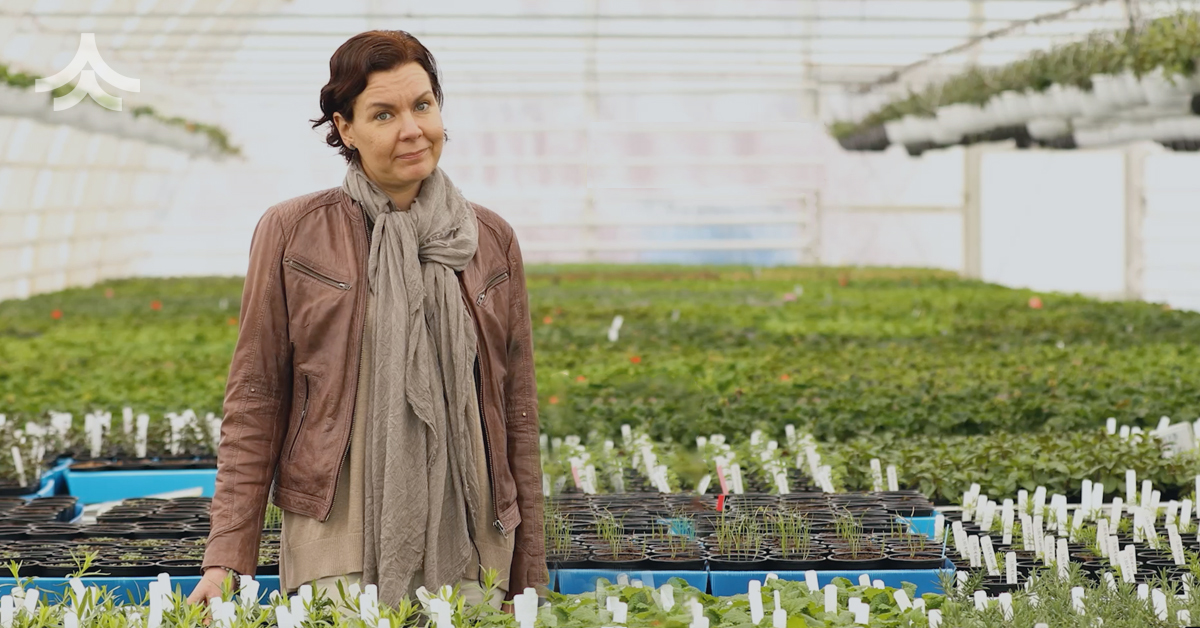
Nina Kinnunen, Director Sustainability, Brand & Communications
Peat and after-life concept
Sustainable peat harvesting and after-life
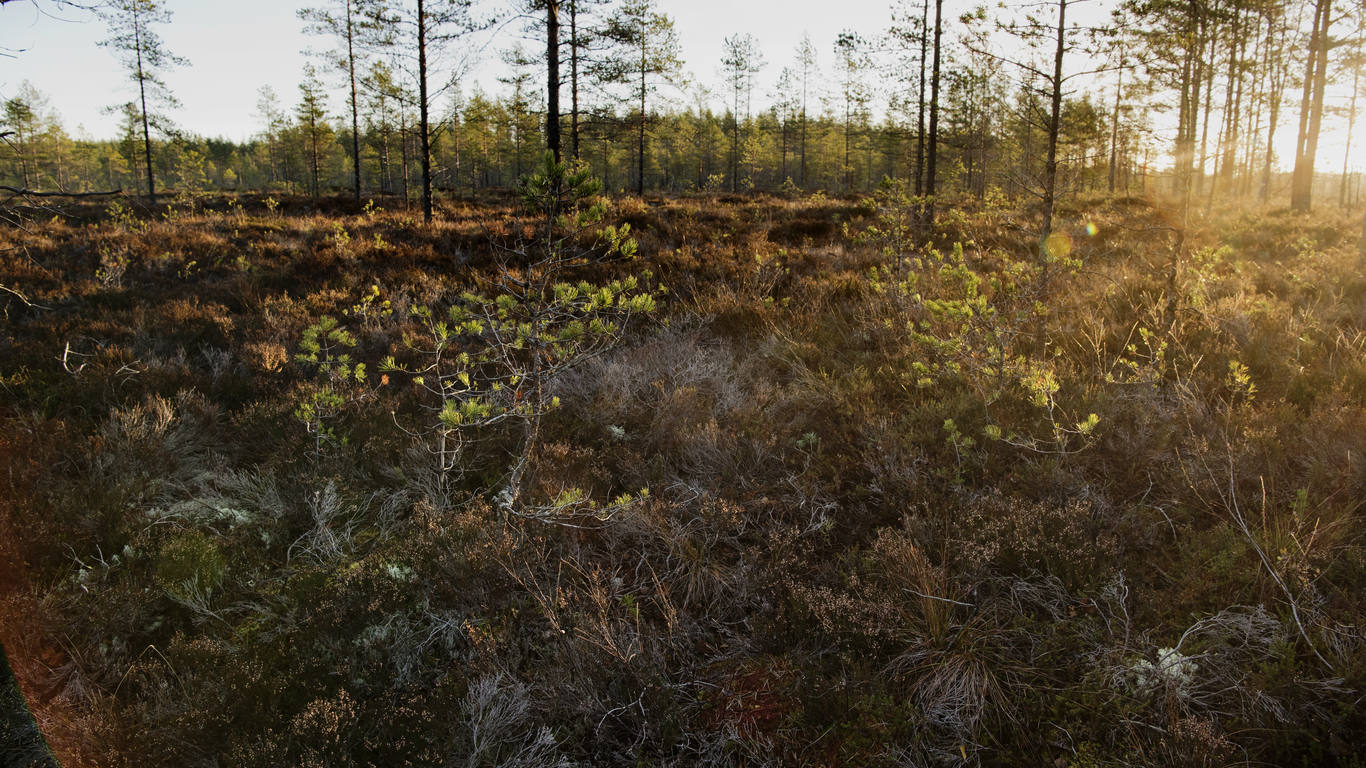
Together with stakeholders, Kekkilä-BVB will develop the sustainable harvesting and after life concept for peat bogs. We own peat bogs in Finland, Sweden and Estonia. To ensure sustainable harvesting and after life processes, we will combine current best practices with a future look. A part of this is RPP certification.
1 Select peat area
Kekkilä-BVB peat is harvested only from carefully selected sites where specific extraction permits have been obtained from the local government. These areas are selected, in part, because they have no conservation value. We are not harvesting peat from protected areas. In European Union, peat extracted for fuel or horticulture is harvested from only 0.4 % of all peatlands.
The most regulated companies are those that have an impact on peatlands. From the initiative, it takes several years until all permissions are granted and extraction of peat can start. This includes assessing the site for its conservation values as well as making specific plans to ensure that the bog can be regenerated, when the peat extraction is finished.
2 Preparing for harvesting
After obtaining the necessary permits a series of ditches is dug across the peatland to drain water from the bog. This allows the surface the bog to dry out in order to enable peat extraction. In its natural state the peatland has an extremely soft surface which prevents machines to operate on the bog. It can take up to three years until extraction can start after the first ditches have been excavated.
Responsible Produced Peat (RPP)
By 2024, Kekkilä-BVB will have 80% of used peat RPP certified. Responsibly Produced Peat certification ensures that peatland will be used, managed and restored in a responsible way. The RPP certification system does not allow peat extraction from high conservation value areas.
It stimulates peat extraction from highly degraded areas followed up by appropriate after-use measures. It also implies leaving all ecological valuable areas, with or without a nature conservation status, undisturbed. Responsibly Produced Peat certification secures the best possible development after completion of peat production, with preference for restoration.
3 Harvesting
In Kekkilä-BVB the best available technology (BAT) is used for the water protection in the preparation and production of peat in order to protect the environment and to ensure sustainable production. Peat producers are under very strict regulations. However, we are not sustainable just because the law says so. It is our values and most importantly our customers, which oblige us. We are setting the industry standards as member of Growing Media Europe (GME). We follow EPAGMA’s strict Code of Practice for Responsible Peat Management and are working actively to establish the environmental certification called Responsibly Produced Peat.
When peatlands are drained and degraded, they emit CO2 (carbon dioxide). These degraded peatlands can be perfectly used for peat production. Their rehabilitation afterwards will reduce the emission of CO2 significantly. About 58 % of the peatlands in the EU are degraded.
Different types of sphagnum peat for growing media
The colour of sphagnum peat – white, brown or black peat – reflects its degree of decomposition. The level of decomposition is expressed in the von Post scale and divided into ten classes from very slightly decomposed (H1-H2) to completely decomposed peat (H9-H10). The best peat for substrates is from H1 to H6 in the von Post scale.
Different types of peat are physically and chemically different. For example, dark or “black” highly decomposed sphagnum peat has the highest water holding capacity, whereas the white sphagnum peat has the highest air capacity. Calcium and magnesium concentrations as well as pH-values also vary between the different peat types.
Peat from different sources varies also biologically and in microbial composition. Generally, blond or light-colored peat (H1-H2 in the von Post scale) are known to be very disease suppressive. This is because they can harbor high populations of ‘friendly’ microbes such as Trichoderma and Streptomyces species, which have shown to reduce the levels of pathogenic microbes in soil.
Looking for peat we go to drained bogs with extraction permits, if the bog is untouched or protected, we do not go there. The peat can be harvested roughly from May to September, when the weather is warm, and the surface of the bog dry enough. Horticultural peat is extracted using two different methods to produce two types of peat – milled peat and block peat.
Milled peat
To produce milled peat, 1–3 cm thin layers of peat are milled or harrowed loose from the surface of the drained peat bog. After several days of drying under the sun the peat is sufficiently dry (approximately 40–45% moisture content) to be harvested. It is collected from the surface of the peat bog by vacuum harvesters or collected from previously built ridges. Stockpiles of peat are formed at the edge of the bog and covered. Finally, when required at the factory, the peat is transported for further processing.
Block peat
In order to produce block peat, big blocks of peat are dug out up to a depth of approximately one metre. These blocks are left on the surface of the bog to drain excess water. As the blocks dry they are turned and finally piled manually in small piles to dry until they are dry enough to be processed in the substrate producing unit.
4 After-use for regenerating the bog ecosystem
Once peat extraction is finished the land is still valuable. We make sure life continues in the bogs long after we leave them. Nature is often richer then before we came. The land can be used for other purposes which have been pre-determined. The after-life of a peat bog is often determined by 2 factors. First, we harvest from owned and rented peat bogs. Whereas with the owned peat bogs we retain control during the after-life stage, with a rented bog the owner makes the final decision. However, in both cases, after life is determined in the harvesting permit. The second factor is the natural state of the peat bog. Due to natural factors, some bogs are more wet than others making them more suitable for re-wetting. Others naturally stay dry making them more suitable for forestry and agriculture.
The most common types of after-use are forestry, agriculture and re-wetting. During the process of re-wetting, ditches are blocked in order to re-wet the area and native plants are planted to encourage the regeneration of a natural bog ecosystem. In many cases, the restored areas have even higher biodiversity than before peat production.
During the re-wetting, the emission of CO2 is significantly reduced, and the bog will again start absorbing CO2.
We at Kekkilä-BVB are constantly studying and testing alternative materials. All materials have their pros and cons and none of them is perfect. However, peat performs best in overall comparison combining both quality and environmental criteria.
Small carbon foot print for transport
Peat has a low bulk density and is easy compressible. This makes it very fuel efficient for transporting over long distances. This helps to keep transportation costs low and to reduce impact on climate change.
A comparison – this is how much peat we use at Kekkilä-BVB
Let´s imagine that all EU peatland was found in Finland. That’s 282 000 km2 which is 92 % of Finland’s area. Peat producers use 0.4 % of the total 282 000 km2. That’s about 1 100km2. And only half of that is used by companies like Kekkilä to grow something. That’s about 500 km2 and that is smaller than the area of Helsinki. In the whole of EU!
Will there be fit for purpose substrates also in the future?
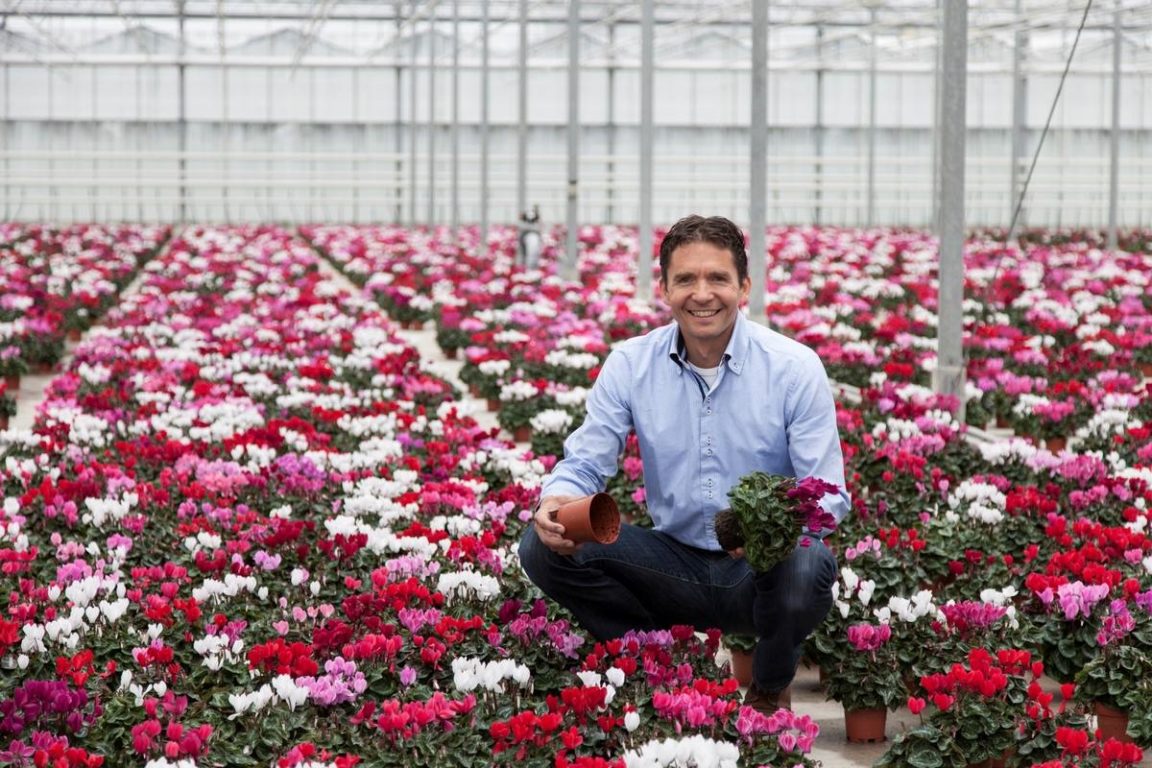
Arjan Zwinkels
The world is facing a great demand for substrates in the future. According to Arjan Zwinkels, Product Development Manager at Kekkilä-BVB, a significant part of the demand will still be peat.
- Peat will still be important in the future, partly for its safe and buffering features, partly because of the great amount of substrate needed in the future, Arjan says.
According to Arjan, it is estimated that the world will use twice as much peat in the future as is used today. Peat is safe, it buffers water and it is free from pesticides and bad fungi. It is also very safe for the grower; it holds the right amount of water.
- Peat is free from nutrients and can easily be mixed with other sustainable raw materials or organic fertilizers, Arjan says.
Peat as a base in mixtures is the future
Due to the great amount of substrate required in the future, the need for new raw materials will also increase. The use of wood fiber, bark, coir, compost, perlite and sphagnum moss will also rise. The growing media constitute today at Kekkilä-BVB is peat complemented with perlite, coir and wood fiber. In the future it will be 40%-50% peat mixed with different kinds of existing or new materials.
– Peat as a base in mixtures will remain due to it´s capacity of being safe and have the capability to buffer water, nutrients and pH, Arjan says.
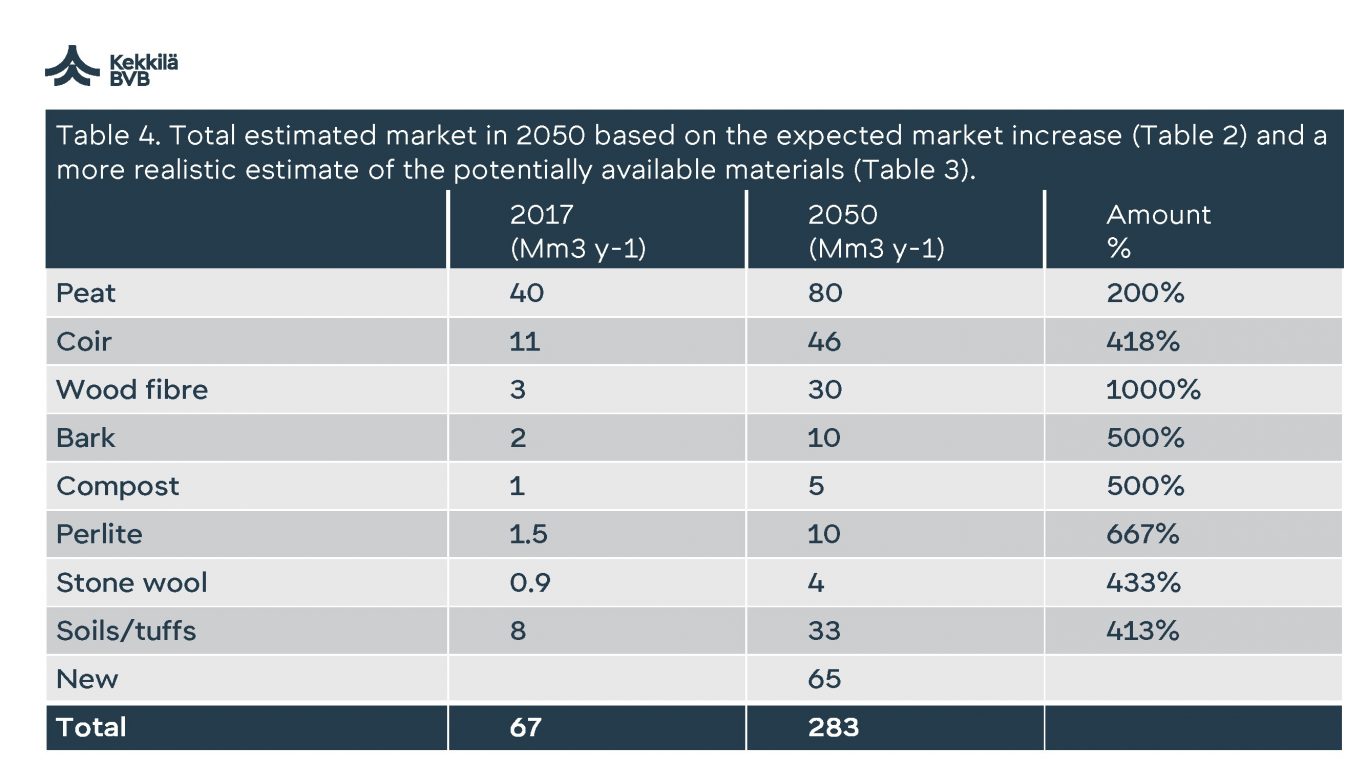
Offering new mixes of growing media raises the demand for advice on ´how to grow in new materials´.
- Growers need to know how to grow in new materials, we can support them with that knowledge, Arjan says.
Wood fiber, sphagnum moss and bark are renewable, sustainable raw materials. While peat has a higher carbon footprint, coir has a higher water footprint due to the washing process.
- You also have to buffer coir with calcium and then you have to transport it, nor does coir buffer as much water as peat either, Arjan says.
Responsible Produced Peat – RPP certification
Swedish, Finnish and Estonian country specific legislations regarding peat harvesting are very strict and harvesting is done in accordance with local regulations. On top of these legislations we proceed with RPP certification. When harvesting, peat is harvested from degraded areas, areas that have been drained by earlier generations. Harvesting is nowadays never done in untouched peat bogs. RPP certification ensures that peatland will be used and managed during and after harvesting in a responsible way.
The RPP certification system does not allow peat extraction from high conservation value areas.
The system stimulates peat extraction from highly degraded areas followed up by appropriate after-use measures. It also implies leaving all ecologically valuable areas, with or without a nature conservation status, undisturbed. Responsibly Produced Peat certification secures the best possible development after completion of peat production, the preference being restoration.
Read more about peat harvesting and afterlife concept here.
For more information please contact Arjan Zwinkels.